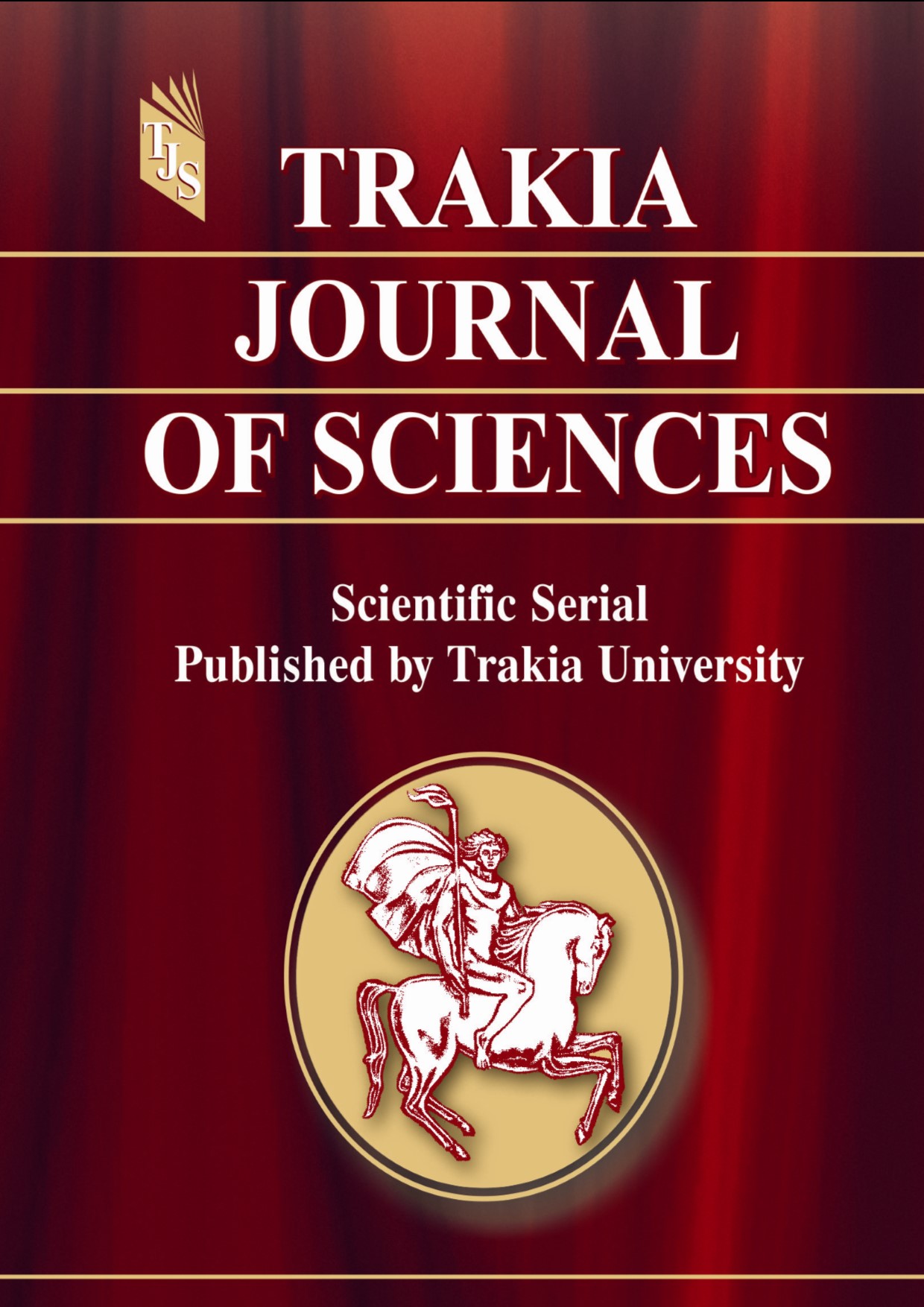GESTATIONAL SARS-COV-2 AND THE MODE OF DELIVERY: MINI REVIEW
DOI:
https://doi.org/10.15547/tjs.2025.s.01.006Keywords:
SARS-CoV-2, pregnancy, delivery mode, infectionsAbstract
Purpose: The emergence of the SARS-CoV-2 coronavirus has posed untold challenges to medical systems, as pregnant women are more susceptible to its harmful effects. Material/Methods: Clinical studies are seeking to understand the intricacies of the virus’s action during pregnancy, and to clarify the relationship between gestational infection with SARS-CoV-2 and mode of delivery. This literature review aims to explore and outline the existing knowledge related to different components of the topic, highlighting important subtopics such as: preterm birth, cesarean section, preeclampsia, preterm labor, and fetal distress. Results: Recent studies have shown a higher rate of preterm birth among pregnant women with SARS-CoV-2; and also that vaginal delivery is relatively safe with respect to SARS-CoV-2 infection in uncomplicated cases, but in complicated cases, cesarean section is a safe method. In addition to the complexity, gestational infection and SARS-CoV-2 infection can be followed by complications such as preeclampsia and premature rupture of membranes, additional factors determining the mode of delivery.
Conclusions: In this context, the aim of this literature review is to critically analyze the available information on the association between gestational infection with SARS-CoV-2 and the mode of delivery, shedding light on key issues related to clinical care and guiding future research efforts.
References
Alnasser A, Alburaih J, Abuzaid A, Al Thomali A, Alkhazal M, Alraddadi A, et al. Effect of the severity of SARS-CoV-2 on pregnancy and delivery: A narrative review. Microbes Infect Dis. 2023;4(2):401–407.doi:10.21608/mid.2023.200981.1489
Di Toro F, Gjoka M, Di Lorenzo G, De Santo D, De Seta F, Maso G, et al. Impact of COVID-19 on maternal and neonatal outcomes: a systematic review and meta-analysis. Clin Microbiol Infect. 2021;27(1):36–46.
Bellos I, Pandita A, Panza R. Maternal and perinatal outcomes in pregnant women infected by SARS-CoV-2: A meta-analysis. Eur J Obstet Gynecol Reprod Biol. 2021;256:194–204.
Allotey J, et al. Clinical manifestations, risk factors, and maternal and perinatal outcomes of coronavirus disease 2019 in pregnancy: living systematic review and meta-analysis. BMJ. 2020.
Khalil A, et al. Change in the incidence of stillbirth and preterm delivery during the COVID-19 pandemic. JAMA. 2021.
Luo Y, Yin K. Management of pregnant women infected with COVID-19. Lancet Infect Dis. 2020.
Mendoza M, et al. Pre-eclampsia-like syndrome induced by severe COVID-19: A prospective observational study. BJOG. 2020.
Siahafshari KM, Movahedi M, Hajhashemi M, Khorvash F, Saeidi M, Allameh Z. Evaluation of maternal and fetal outcomes in pregnant women with COVID-19 based on different trimesters. Adv Biomed Res. 2023;12(1):165. doi:10.4103/abr.abr_173_22
Piekos SN, Roper RT, Hwang YM, Sorensen T, Price ND, Hood L, Hadlock JJ. The effect of maternal SARS-CoV-2 infection timing on birth outcomes: a retrospective multicentre cohort study. Lancet Digit Health. 2022. doi:10.1016/S2589-7500(21)00250-8
McClymont E, Albert AY, Alton GD, Boucoiran I, Castillo E, Fell DB, et al. Association of SARS-CoV-2 Infection During Pregnancy with Maternal and Perinatal Outcomes. JAMA. 2022;327(20):1983–1991. doi:10.1001/jama.2022.5906
Giuliani F, Deantoni S, Papageorghiou A.T. Vaginal vs cesarean delivery for COVID-19 in pregnancy. Am J Obstet Gynecol. 2022;228(3):358–359. doi:10.1016/j.ajog.2022.10.020
Morán Antolín E, Broullón Molanes JR, de la Cruz Conty ML, Encinas Pardilla MB, Guadix Martín MDP, Sainz Bueno JA, et al. SARS-CoV-2 Infection and C-Section: A Prospective Observational Study. Viruses. 2021;13(11):2330. doi:10.3390/v13112330
Cai J, Tang M, Gao Y, Zhang H, Yang Y, Zhang D, et al. Cesarean Section or Vaginal Delivery to Prevent Possible Vertical Transmission from a Pregnant Mother Confirmed with COVID-19 to a Neonate: A Systematic Review. Front Med (Lausanne). 2021;8:634949. doi:10.3389/fmed.2021.634949
Bisht R, Kandalgaonkar VP, Shinde KK. Cesarean Section Rate among COVID-19 Mothers and Its Classification through Robson’s Criteria. J South Asian Fed Obstet Gynaecol. 2021;13(5):342–346. doi:10.5005/jp-journals-10006-1921
Vanegas OG, Pérez O. SARS-CoV-2 Infection and Preeclampsia—How an Infection Can Help Us to Know More about an Obstetric Condition. Viruses. 2023;15(7):1564. doi:10.3390/v15071564
Celewicz A, Celewicz M, Michalczyk M, Woźniakowska-Gondek P, Krejczy K, Misiek M, et al. SARS CoV-2 infection as a risk factor of preeclampsia and pre-term birth. Ann Med. 2023;55(1). doi:10.1080/07853890.2023.2197289
Martinez-Perez O, Prats Rodriguez P, Muner Hernandez M, Encinas Pardilla MB, Perez Perez N, Vila Hernandez MR, et al. The association between SARS-CoV-2 infection and preterm delivery: a prospective study with a multivariable analysis. BMC Pregnancy Childbirth. 2021;21(1). doi:10.1186/s12884-021-03742-4
Akhtar H, Patel C, Abuelgasim E, Harky A. COVID-19 (SARS-CoV-2) Infection in Pregnancy: A Systematic Review. Gynecol Obstet Invest. 2020. doi:10.1159/000509290
Yi J, Chen L, Meng X, Chen Y. The impact of gestational weeks of Coronavirus disease 2019 (COVID-19) infection on perinatal outcomes. Reprod Health. 2024;21(1). doi:10.1186/s12978-024-01762-9
David AL, Spencer RN. Clinical Assessment of Fetal Well-Being and Fetal Safety Indicators. J Clin Pharmacol. 2022;62(S1). doi:10.1002/jcph.2126
Resende MF, Yarnell C, D’souza R, Lapinsky S, Nam A, Shah V, et al. Clinical decision analysis of elective delivery vs expectant management for pregnant individuals with COVID-19–related acute respiratory distress syndrome. Am J Obstet Gynecol MFM. 2022;4(6):100697. doi:10.1016/j.ajogmf.2022.100697
Mullins E, Evans D, Viner RM, O’Brien P, Morris E. Coronavirus in pregnancy and delivery: rapid review. Ultrasound Obstet Gynecol. 2020;55(5). doi:10.1002/uog.22014
Carvalho-Sauer R, Flores J, Teixeira MG, Saavedra R, Niag M, Paixão ES. Fetal death as an outcome of acute respiratory distress in pregnancy, during the COVID-19 pandemic: a population-based cohort study in Bahia, Brazil. BMC Pregnancy Childbirth. 2023;23(1). doi:10.1186/s12884-023-05601-w

Downloads
Published
Issue
Section
License

This work is licensed under a Creative Commons Attribution-NonCommercial 4.0 International License.


